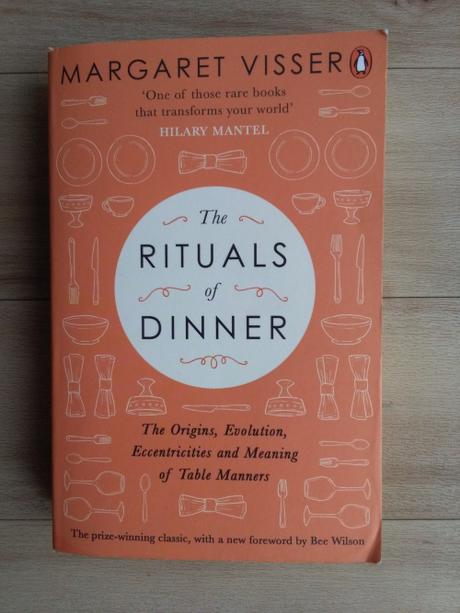
This is the second in a duo of posts inspired by reading The Rituals of Dinner by Margaret Visser. The first post can be found here.
One of Visser’s points that I would like to content is the idea that food is not something we value. Having a good meal with people whose company we enjoy is an activity we seek. In this time of experiences over ‘stuff’, we are certainly keen on creating moments that matter and sharing good times – so much so that our big feasts are often instigated by commercial activities, rather than our own particular personal or social cultural rituals. We now get very excited by Halloween, Valentine’s Day, the World Cup and other big sporting events, as well as get the opportunity to invest with great splendour at Easter, Christmas and New Year.
There are many many interesting nuggets within The Rituals of Dinner which made me look at food habits in a new light as I gained a better understanding of the historical or cultural context from which these habits sprang.
- Offal used to be the most prized part of eating an animal. This is because at a time when hunting was an important way to get meat and there were no fridges to keep food cool, offal would be most the delicate and most important part of the animal to eat fresh – it could not be hung and improved as with other cuts. And offal is often the most nutritious part of an animal – quite different to a big fat plumped up piece of chicken breast.
- Meals that are to be eaten with chopsticks have the food chopped already, which necessarily encourages faster eating, in part because the food is already in convenient sizes but also because it is most likely to lose heat thus. Compared to this, those of us relying on knives and forks are slow and languorous eaters.
- What will happen as we eat less meat? This is important as meat often formed the basis of the ceremonial energy in a Big Meal: it is a special and relatively expensive ingredient and there is entertainment and social value to be had in going through the ritual of carving and dividing up the meat. It is hard to see how as much energy and excitement can be created around a roast butternut squash or cauliflower.
Back to our original questions: are table manners dead or getting worse? If this is a source of concern to you, rest assured that help is available. In the US, the Barclay classes, table manners and how to carry out small talk are part of its programme. http://www.thebarclayclasses.com/aboutbarclay.html The next generation will know what to do.
Advertisements